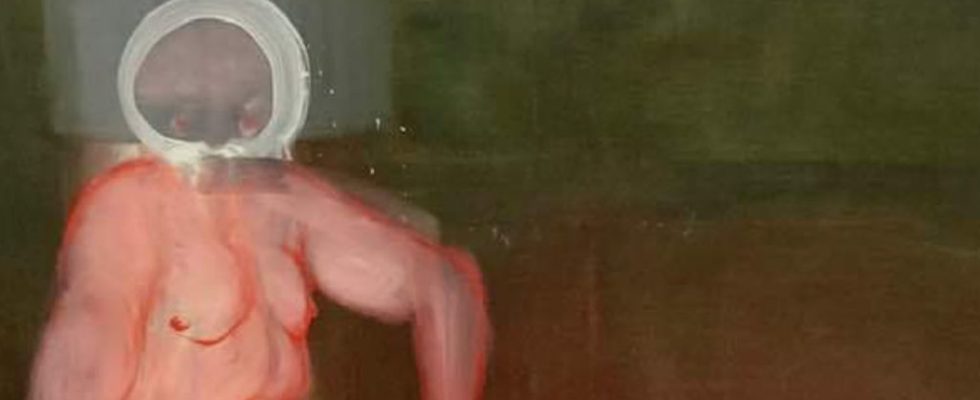A canvas from the Palais de Tokyo, called fuck abstraction, is currently arousing controversy, accused of encouraging child pornography. In this work from the Paris museum by Miriam Cahn, we can see, bathed in a certain blur, a muscular and tall man imposing fellatio on a much smaller figure, and holding the head of another, the two having hands tied.
The painting is accompanied by an explanatory notice, which warns that certain scenes “are likely to offend the sensibilities of the public” and gives context to the work: “The painting fuck abstraction ! was made during the war in Ukraine and after the images of Butch’s mass grave were broadcast along with images of numerous rapes of women and men (…). Miriam Cahn reacts on the spot to the violence of these images which circulated on social networks and went around the world. »
“The artist here represents an adult person”
However, and despite these explanations, the work has been the subject of numerous criticisms, calling for it to be taken down. “This is what we dare to exhibit since February 17 at the Palais de Tokyo. (…) Pick it up quickly. It’s unbearable ” tweeted Karl Zero, a television presenter committed against child crime but also regularly accused of conspiracy. “What is the use of certain paintings by Mrs. Cahn Miriam depicting children performing fellatio on an adult? (…) We ask that the paintings in question, by Ms. Cahn Miriam, be taken down at the Palais de Tokyo”, also writes a petition, signed by more than 8,000 people. The Juristes pour l’Enfance association entered the battle, calling on Sunday March 19 to remove the painting “representing a man imposing fellatio on a child”.
However, the cartel of the exhibition indicates very explicitly that this is not an apology for pedocrime: “For the artist, ”this is a person with their hands tied, raped before she was killed and dumped in the street. The repetition of images of violence in wars is not intended to shock but to denounce”. The museum also clarified then in a statement that “the artist here represents an adult person”.
The ministry questioned
But the explanation is insufficient for Juristes pour l’enfance, and does not excuse the work from falling under the law: “It matters little (sic) the allegations or even the intentions of the artist: they do not to escape penal qualification insofar as most people recognize the representation of a child in the kneeling and raped figure. » The Penal Code prohibits « the fact, with a view to its dissemination, of fixing, recording or transmitting the image or representation of a minor when this image or this representation is of a pornographic nature. »
For Juristes pour l’Enfance, which notably challenges the Palais de Tokyo and the Ministry of Culture, which manages the museum, “this type of representation does not make it possible to fight against pedophile acts but on the contrary is likely to reinforce, even encourage , people with a pedophile tendency to take action. The Palais de Tokyo has not yet removed the work, and the Ministry of Culture, contacted by 20 minuteshad still not spoken at the time of publication of this article.
“I wasn’t sure I could picture that”
It should be noted that the artist herself had expressed her doubts about the representation of these rapes, in an interview at World, in February: “After Boutcha, I wasn’t sure I could capture that. But I knew that I had to try to show these crimes, because what shocks me is that it will never change: we don’t know how to learn. »
On social networks, the reactions are clearly divided. “Tissue of lies”, say some. A user, on the contrary, considers “difficult to see in this painting an apology or an enjoyment”. And adds “We can debate the means and the political effects of art, or the use of images to denounce. But removing the word war from our dictionaries will not help us. »

